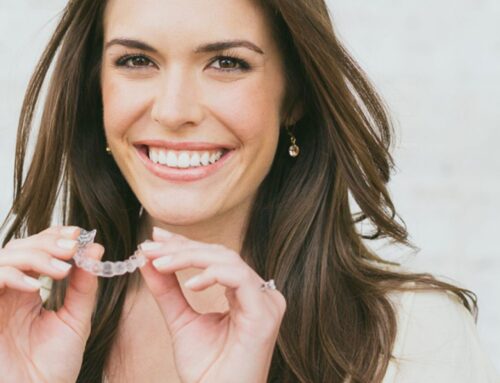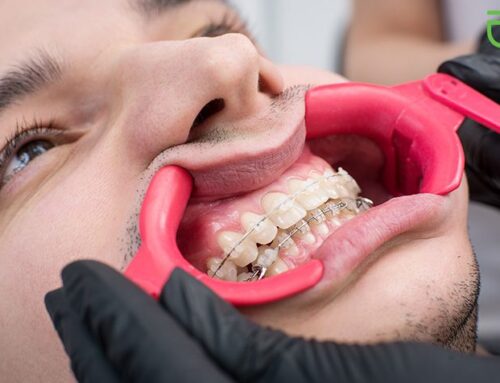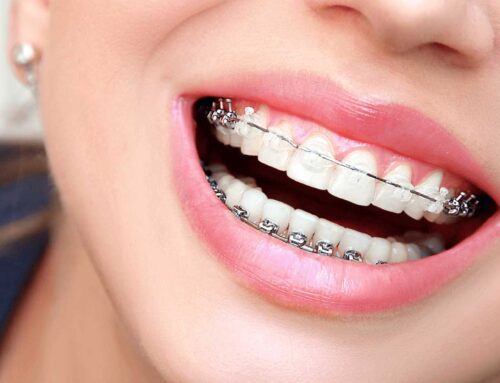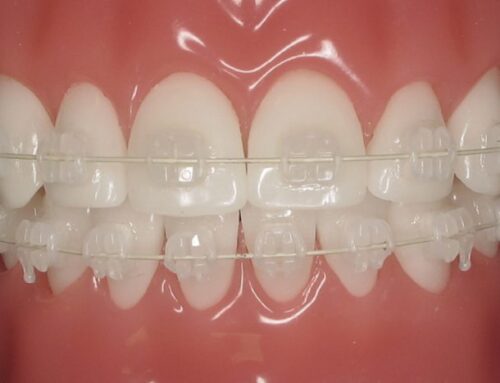Can You Get Braces Twice?
You surely remember the day when you finally got your braces off, how thrilled and relieved it must’ve felt to be able to smile without flashing those metal train tracks. And you probably thought that that was the last day for you to have ever worn braces in your life, ever again! But here you are, trying to find out if you can wear braces once again (Whaaaat?).
Well, the simple answer is yes, you can. It is quite possible that you might need to em-brace your teeth for the second time as our teeth keep shifting throughout our lives. But getting braces twice could be because of one or more of the following reasons –
Not wearing retainers
Maybe you didn’t wear your retainers properly after the first time you got your braces removed. Retainers are provided to keep the teeth from shifting again and neglecting to wear them could result in undesired consequences. When braces are removed, the teeth usually tend to move back to their initial position. In orthodontia, this process is known as orthodontic relapse and can happen due to various reasons. To prevent this, our orthodontist or dentist provides us with retainers, that are either fixed or removable. To ensure continued success of the treatment, wear your retainers regularly or for as long as you have been instructed to. Otherwise, getting a second set of braces later in life is inevitable.
Incomplete orthodontic treatment
You couldn’t complete your orthodontic treatment in the first place. And there could be various reasons behind that. Maybe you moved to a different place and couldn’t continue visiting your dentist. Or the orthodontic treatment was costing you too much. Another reason could be that you were a teenager at that time, and you had a low tolerance for pain. In any case, if you opted to stop your treatment midway, you are bound to get unsatisfactory results.
Misjudgement of the malocclusion of teeth
Malocclusion means the misalignment of teeth and is often the reason why a visit to the orthodontist is required. This issue can be resolved by wearing braces. Sometimes though, misjudgements can occur and the factor causing this misalignment of the upper and lower teeth is not resolved. For instance, if sometime in the future, a molar intrusion happens, it can change the outcome of the treatment causing a shift in the alignment again.
Not getting your teeth monitored regularly
If you want to show-off a beautiful smile and attain those perfectly straightened pearly whites, being committed to getting your orthodontic treatment regularly monitored is a must. Your teeth or gums could alter in any way and that could affect the end results of the treatment, so it is absolutely necessary to show up for each and every appointment with your orthodontist. Because, if proper follow up checks are not done or if the teeth are not being monitored consistently, the underlying issue won’t be resolved and that could lead to a relapse.
Not complying with the dos and don’ts of braces
Well, if you’re one of those who don’t like to follow instructions (especially your orthodontists’), you’re bound to see your teeth’s doom eventually. From eating food that’s not allowed, to missing appointments, to being careless about your oral hygiene, there are a good deal of patients who don’t understand that the results they expect to see rely mostly on their efforts towards keeping their smile straight. To see optimum results, follow your orthodontists’ advice duly. If these are not followed, the treatment will yield unsatisfactory results or take way too long to be completed.
Continuation of bad habits
This one’s for all those who have a sweet tooth and other habits that negatively affect their orthodontic treatment. Eating sticky and hard food, excessive chocolates, and gummies, smoking, and missing on dental or orthodontic checkups, all these habits may not seem like a big deal, but they do have adverse effects on the treatment. Being irresponsible about your oral health can put the alignment of your teeth at risk as gum problems can cause the enamel to erode or even loss of teeth might occur. Therefore, to enjoy the benefit of straighter teeth, cease these bad habits altogether.
Gradual movement of teeth
As we grow older, our body goes through changes and our teeth are no exception to them. While it is absolutely normal to experience shifting of teeth throughout our lives, sometimes unexpected tooth movements can occur when there is a change in the balance of forces in our mouth. Our teeth are under pressure and stress constantly when we are awake and active, and this can add up over time. Even activities like sneezing, talking, smiling, and coughing cause the muscles of our jawbone and mouth to move. All these factors can lead to a slow but gradual shift in the alignment of teeth.
Some common factors that cause our teeth to shift include:
- Periodontitis or gum disease
- Osteonecrosis (a type of bone disease that causes the death of bone tissue)
- Oral cancer
- Tooth inflammation or Periapical periodontitis
- Incomplete orthodontic treatment
- Dental trauma
- Wear and tear of dental fillings
- Tooth extraction
- Not wearing a retainer after braces
- Hormonal changes
- Pregnancy
- Factors of aging
- Unexpected jawbone growth
- Poor oral hygiene and habits
- Bruxism or teeth grinding
- Eruption of wisdom teeth
- CPAP therapy – Continuous Positive Airway Pressure
To stop your teeth from shifting, the cause behind the problem should be found out and treated first. If gum disease is the reason behind relapse, you’ll want to go through treatment with a periodontist before commencing orthodontic treatment.
Although, the most successful way for fixing shifting teeth – no matter what the cause may be – is braces, as they apply pressure to move teeth in the right direction.
The best treatment option for both children and adults are braces. And as per the American Association of Orthodontics, every one out of five patients who needs braces is over 21
Orthodontic Relapse
Your first orthodontic treatment may have given you a picture-perfect smile before. It could be that you still have that beautiful smile, or it could be that you see something changed about your teeth when you look in the mirror today. If you’re a previous orthodontic patient who has watched in dismay as your teeth have drifted back to their initial positions, you’re not the only one!
Did you know that even after your orthodontist declared your treatment to be complete, your teeth still did have a tendency to move back to their original position? This gradual shifting of teeth is known as orthodontic relapse. And to avoid this from happening, your dentist must have provided you with a retainer. Well, the most common cause behind orthodontic relapse is usually failure to consistently wear the retainers provided. There are various types of retainers, and they all are not only fairly low maintenance but also inconspicuous compared to braces.
Unfortunately, a lot many patients are excited to not have wires and appliances in their mouths anymore and make the mistake of not wearing their retainers properly. Other times, patients misplace or break their retainer and completely ignore the fact that they ought to get it replaced. In one way or another, avoiding using the retainer accurately can result in relapse, where your teeth start to shift back to where they were originally.
Another reason why you might require orthodontic treatment again is because of unexpected growth. Teenage or pre-teen years is when many patients get braces, which is a good time in life to help direct healthy growth in the right direction. Nonetheless if growth continues and fast-tracks in an unanticipated direction, you could end up with spacing, crookedness, or misalignments that involve more treatment.
Certain injuries to the jaw could result in problems needing orthodontic correction as well. Bruxism is a quite common concern that can change the placement of the teeth. This disorder is often triggered by stress and is recognised by habitual teeth-grinding either during the day or while sleeping.
While gradual shifting of teeth is natural and there’s only so much you can do to prevent it, ensuring overall healthy oral habits and hygiene is somewhere you can start from.
Here are some other preventative steps to reduce the risk of teeth shifting:
- Thoroughly brushing teeth twice every day
- Abstaining from smoking
- Wearing a well-fitted mouthguard while participating in sports
- Sufficient intake of calcium and vitamin D supplements to help counteract osteoporosis or bone disease
- Keeping sugar consumption under control to avoid gum disease
- Keeping good overall well-being
- Wearing a retainer consistently after braces
- Flossing at least once every day
- Following up with regular dental check-ups and cleanings
- Wearing a night guard (also known as a mouth guard, dental guard, bite splint or nocturnal bite plate) for teeth grinding
- Being mindful of any treatments or medications that could distress the teeth
- Fixing poor posture
Treatment Choices to Consider
It’s not very common that a patient requires the same level of treatment they formerly did, so one could consider faster, more convenient options than braces (And who likes to wear them anyway?). Invisalign is an option worth considering if you need a more significant correction for the second time. These aligners are entirely clear, letting you wear a sparkling smile that looks clean for the length of treatment. It is also possible to remove the aligners for a regulated amount of time every day for mealtimes or if you’re partaking in a sporting event. This treatment option normally lasts between a period of 12 and 18 months, which is remarkably shorter than several other treatment plans that include braces.
If you think you might be able to benefit from an orthodontic treatment again, contact Georgian Dental today and book an initial consultation, we will do an in-depth exam and recommend treatment and payment options to fit your smile, your lifestyle, and your budget. Visit us today and get your smile in style!
Appointment Request
If you’re interested in any of our procedures, and would like to meet with one of our dentists to discuss options, costs and get additional information, complete this short form and we’ll give you a call to arrange for a no-obligation appointment at our Barrie clinic.










